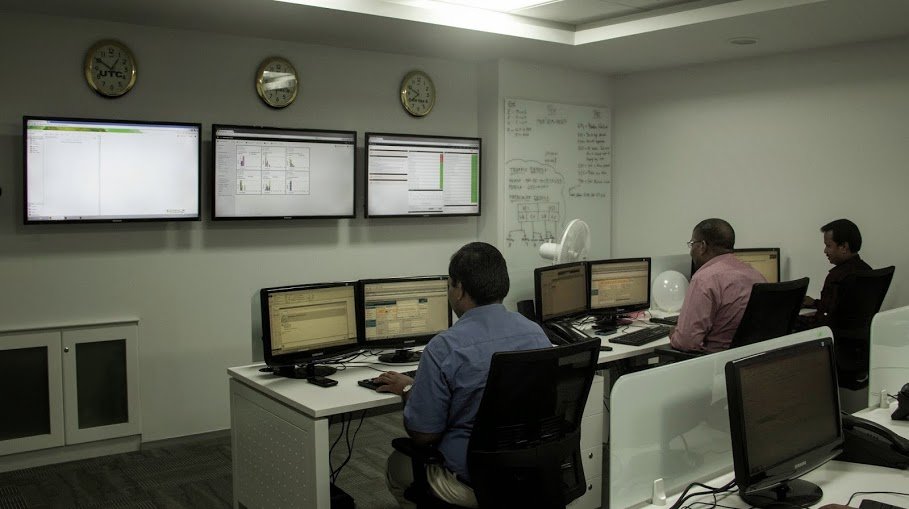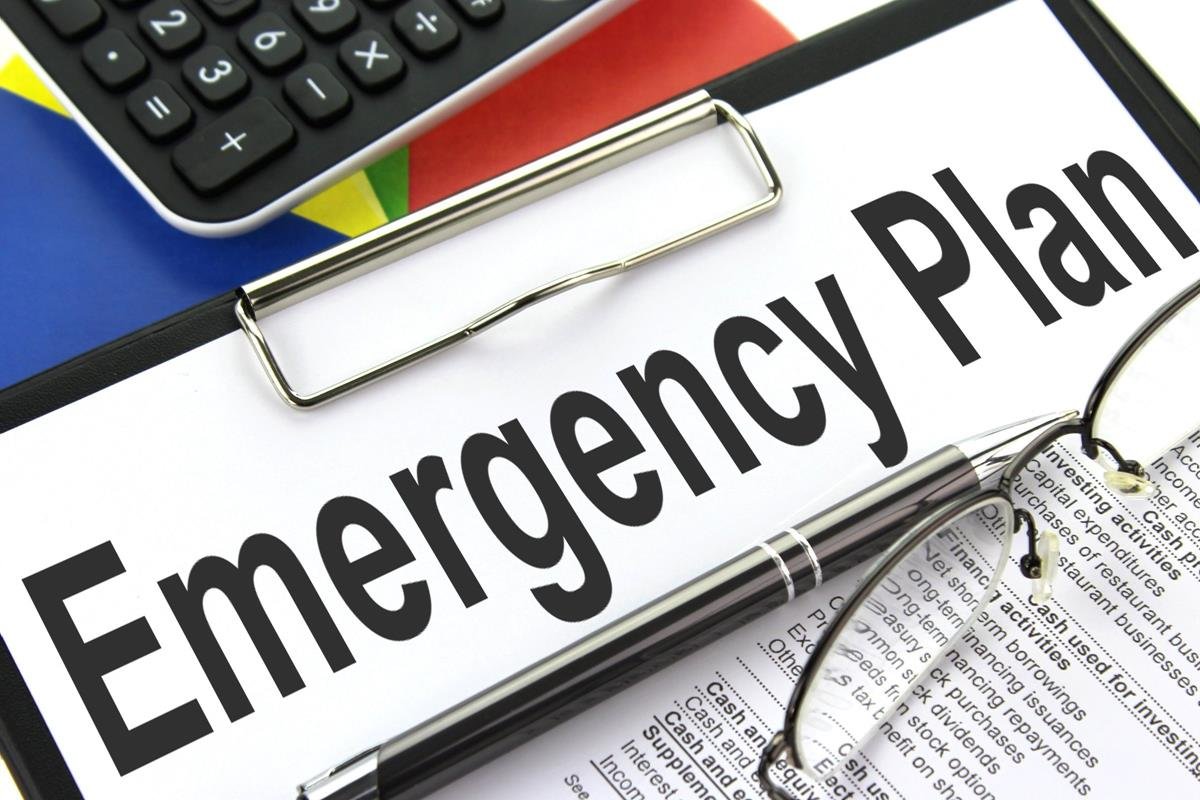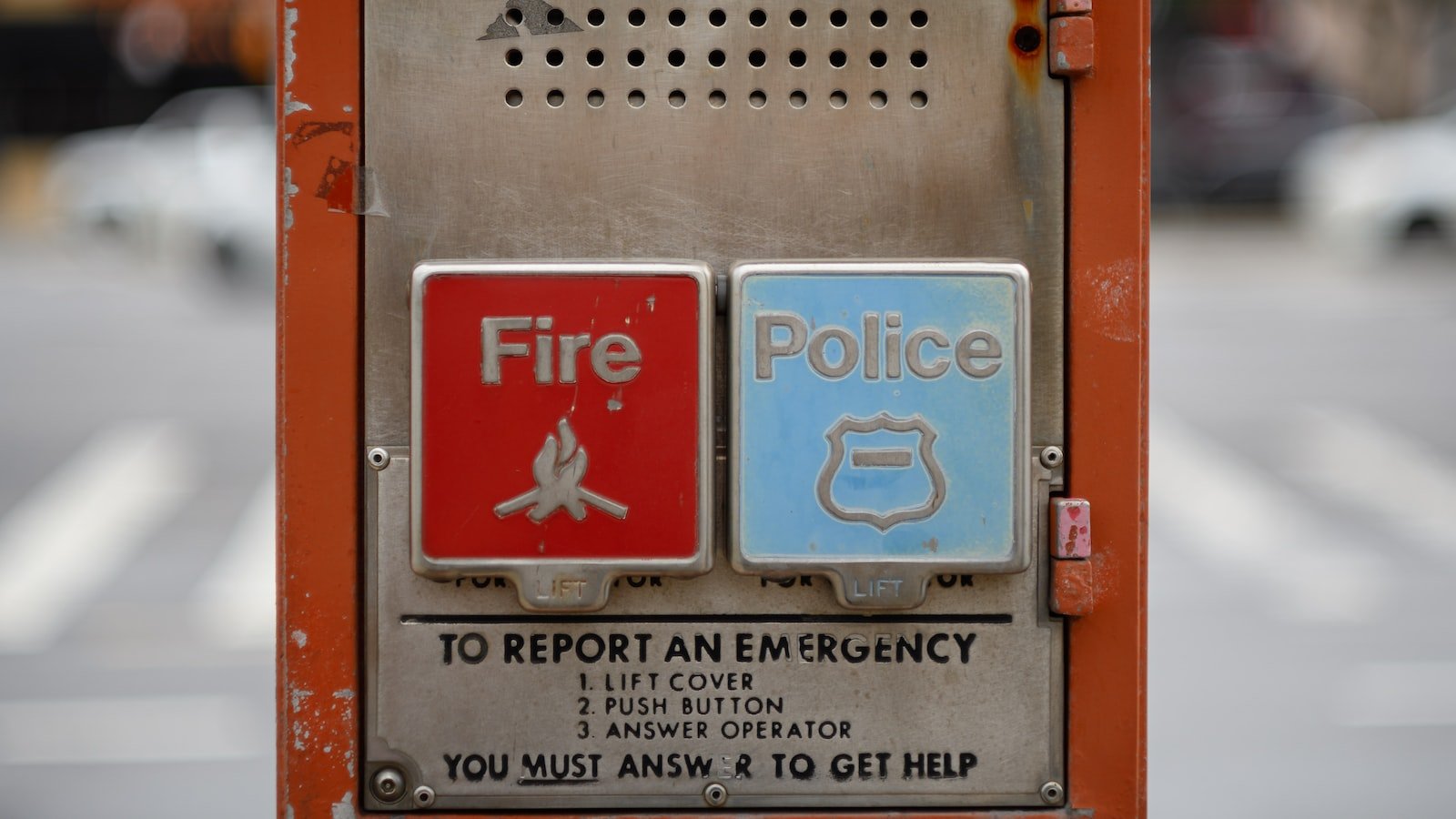As the ocean’s surface ripples gently beneath the golden sun, it’s easy to forget the colossal power that lies beneath its serene facade. But remember: as enchanting as the sea can be, it wields the ability to unleash devastation in the blink of an eye. Tsunamis, the monstrous waves born out of seismic events, have the capacity to obliterate entire coastlines and disrupt lives within mere moments. While we may not be able to predict when or where the next tsunami will strike, one thing is certain: preparedness is key. In this article, we delve into the intricacies of preparing for a tsunami, equipping you with the knowledge needed to safeguard your life, your loved ones, and your community.
Table of Contents
- Understanding Tsunamis: Causes, Characteristics, and Potential Impacts
- Monitoring and Early Warning Systems: Staying Informed and Prepared
- Creating an Emergency Plan: Steps to Protect Yourself and Your Loved Ones
- Essential Emergency Supplies: Stocking Up for Survival
- Evacuation Procedures: Ensuring Safety During Tsunami Threats
- Q&A
- Final Thoughts

Understanding Tsunamis: Causes, Characteristics, and Potential Impacts
Tsunamis, also known as seismic sea waves, are awe-inspiring natural phenomena that can wreak havoc on coastal regions. These mammoth ocean waves are triggered by a variety of causes, including underwater earthquakes, volcanic eruptions, and even meteor impacts. However, it’s important to note that not all earthquakes generate tsunamis; the magnitude and location of the earthquake beneath the ocean’s surface play a crucial role.
Tsunamis typically exhibit distinct characteristics that set them apart from regular waves. Unlike normal ocean waves with crest-to-crest intervals measured in seconds, tsunamis have extraordinarily long wavelengths that can stretch for hundreds of kilometers. This results in the build-up of immense energy as the wave travels across the ocean, moving at speeds exceeding 800 kilometers per hour. When this colossal wave reaches shallow water near the coastline, it undergoes a process of shoaling, causing the wave’s height to dramatically increase, creating a devastating inundation along the shoreline.
The potential impacts of a tsunami are extensive and can have far-reaching consequences. Upon reaching the coast, these massive waves can demolish buildings, uproot trees, and submerge entire communities. The sheer force of a tsunami is powerful enough to drag vehicles, shipping containers, and even large ships inland, turning everything in its path into mere debris. The aftermath of a tsunami is often characterized by widespread destruction, loss of life, and long-term economic and environmental consequences that require significant efforts for recovery.

Monitoring and Early Warning Systems: Staying Informed and Prepared
When it comes to staying informed and prepared, monitoring and early warning systems play a vital role in keeping us one step ahead. These systems provide real-time data and analysis that help us anticipate and respond to potential threats or emergencies. Here are some key points to consider when it comes to monitoring and early warning systems:
- Rapid Response: With advanced technologies, monitoring systems can quickly detect and assess situations, enabling authorities to respond promptly and effectively. The ability to receive timely alerts and updates ensures critical decisions can be made swiftly, potentially saving lives and minimizing damage.
- Data Visualization: Early warning systems provide data visualization tools that present complex information in clear and understandable formats. Through charts, graphs, and maps, trends and patterns can be easily identified, aiding in decision-making processes and resource allocation.
- Collaboration and Communication: Effective early warning systems foster collaboration and communication between different stakeholders. By sharing information and coordinating efforts, communities, governments, and organizations can work together in a unified manner to mitigate risks and enhance preparedness.
- Continuous Monitoring: Monitoring systems operate around the clock, providing a constant watch on various indicators. This continuous monitoring ensures that any changes or potential threats are promptly identified, allowing for timely responses and necessary actions.
By leveraging monitoring and early warning systems, we can stay proactive, better prepared, and more resilient in the face of uncertainties. From natural disasters to public health emergencies, these systems enable us to take the necessary precautions and make informed decisions. Remember, being well-informed is the first step towards effective preparedness.

Creating an Emergency Plan: Steps to Protect Yourself and Your Loved Ones
When it comes to emergency situations, having a well-thought-out plan can make all the difference in keeping yourself and your loved ones safe. Here are some crucial steps to consider when creating an emergency plan:
- Identify potential risks: Start by assessing the types of emergencies that are most likely to occur in your area. These can include natural disasters like earthquakes or floods, as well as man-made emergencies such as fires or chemical spills. Understanding the risks specific to your location will help you tailor your plan accordingly.
- Establish communication: In times of crisis, communication is key. Ensure that all members of your household know how to contact each other during an emergency. Create a list of important phone numbers and designate a reliable out-of-state contact person who can serve as a central point of communication to relay information.
- Create a shelter strategy: Determine the safest areas in your home or workplace where you can seek shelter during an emergency. Identify the nearest safe locations, such as shelters or designated evacuation points, in case you need to leave your premises. Make sure everyone is aware of these safe spots and understands the evacuation routes.
- Prepare an emergency kit: Assemble a well-stocked emergency kit that includes essential items like water, non-perishable food, flashlight, batteries, first aid supplies, and any necessary medications. Keep this kit in an easily accessible location and regularly check and update its contents.
- Stay informed: Stay updated with local news and emergency alerts through reliable sources, such as radio, television, or official government websites. Being informed about changing conditions and directives from authorities will help you make informed decisions to protect yourself and your loved ones.
Remember, emergencies can happen unexpectedly, but being prepared can greatly reduce the impact and increase your chances of staying safe. Take the time to create an emergency plan tailored to your circumstances. Be proactive, stay calm, and most importantly, prioritize the well-being of yourself and your loved ones.

Essential Emergency Supplies: Stocking Up for Survival
At a time when emergencies can strike at any moment, it is crucial to be prepared with essential emergency supplies to ensure your survival. Stocking up on these supplies can provide you with peace of mind and the necessary tools to navigate through unforeseen situations.
In times of crisis, it is imperative to have a reliable source of clean water. Store at least one gallon of water per person per day for a minimum of three days. Consider also stocking up on water purification tablets or a portable water filter, ensuring access to safe drinking water even if your supply runs out.
Food provisions are equally vital for survival. Aim to have a three-day supply of non-perishable food items that require minimal preparation, such as canned goods, energy bars, and dried fruits. Remember to check the expiration dates regularly and rotate your stock to maintain freshness.
Aside from sustenance, it is important to have a well-stocked first aid kit. Ensure your kit includes essentials such as bandages, adhesive tape, antiseptic wipes, pain relievers, and any necessary prescription medications. Adding specific items for your family’s needs, such as infant formula or pet supplies, can also be crucial.
Additionally, other key supplies to consider are flashlights with extra batteries, a portable battery-powered radio to stay informed, a multipurpose tool or Swiss army knife, and a supply of personal hygiene products. Don’t forget to have a supply of cash on hand, as ATMs might be unavailable during emergencies.
By thoughtfully stocking up on these essential emergency supplies, you can increase your chances of survival and minimize the impact of unexpected situations. Stay prepared, stay safe.
Evacuation Procedures: Ensuring Safety During Tsunami Threats
When facing the imminent danger of a tsunami, it is crucial to have well-defined evacuation procedures in place to protect lives and minimize casualties. Safety should always be the priority, and being prepared can make all the difference. Here are some effective measures to ensure a safe evacuation:
1. Early Warning Systems:
Implement robust early warning systems that promptly detect and transmit tsunami threats. This includes monitoring seismic activity and tidal gauges to provide the earliest possible warnings to vulnerable coastal communities.
2. Clear Communication Channels:
Establish clear and reliable communication channels to disseminate evacuation orders swiftly. Utilize multiple platforms to reach the public, including sirens, text messages, social media, radio broadcasts, and official websites. This multi-layered approach ensures that critical information reaches as many people as possible.
3. Evacuation Routes and Assembly Points:
Create well-marked evacuation routes, complete with prominent signage, to guide residents to safety. These routes should lead to designated assembly points situated in higher-elevation areas or beyond established danger zones. Regular drills can familiarize the community with these routes, increasing their effectiveness during emergencies.
4. Emergency Supplies and Shelters:
Encourage residents to prepare emergency supply kits containing essentials such as food, water, medication, flashlights, batteries, and important documents. Designate well-equipped shelters that can provide temporary accommodation for evacuees, ensuring they have access to basic necessities and medical support.
5. Education and Awareness:
Conduct regular workshops and public awareness campaigns to educate people about tsunami risks, safety procedures, and the importance of swift evacuation. Information pamphlets, posters, and educational videos can help reinforce this knowledge and empower individuals to react effectively during a crisis.
Q&A
1. What is a tsunami and why should I be concerned about it?
A tsunami is a series of powerful ocean waves caused by underwater earthquakes, volcanic eruptions, or landslides. You should be concerned about it because tsunamis can cause widespread destruction and loss of life when they reach the coastline.
2. How can I prepare myself and my family for a tsunami?
To prepare for a tsunami, create an emergency kit with essential supplies like food, water, medications, and a battery-powered radio. Develop a family emergency plan and identify evacuation routes to higher ground.
3. What are the warning signs of a tsunami approaching?
Tsunamis are often preceded by a significant earthquake. Other warning signs include the sudden and rapid receding of ocean water, unusual sea level changes, and a loud roaring sound similar to a freight train.
4. Where should I go in case of a tsunami warning?
If you are in a coastal area and receive a tsunami warning, head immediately to higher ground or move inland. Evacuate on foot if possible and avoid using elevators, as power may go out during a tsunami.
5. Is it safe to swim in the ocean after a tsunami warning is over?
No, it is not safe to swim in the ocean after a tsunami warning is over. Even after the initial threat has passed, there may be subsequent dangerous waves, strong currents, and debris in the water.
6. Can tsunamis be predicted accurately in advance?
While scientists can detect and forecast the possibility of a tsunami through earthquake monitoring, it is difficult to predict their exact arrival time, size, or impact with high precision. It is crucial to follow warnings and instructions given by local authorities.
7. Does living in a high-rise building offer adequate protection from a tsunami?
Living in a high-rise building does not guarantee complete protection from a tsunami. It is essential to be aware of your surroundings and follow evacuation orders as tall buildings may be vulnerable to structural damage or inundation in the event of a powerful tsunami.
8. What should I do if I am caught in a tsunami while in a boat?
If you are caught in a tsunami while in a boat, navigate the vessel towards deep waters as tsunamis typically have smaller amplitudes in deeper regions. Once in deep water, maintain a safe distance from the coastline until the threat has passed.
Final Thoughts
As we conclude this journey through the depths of tsunami preparedness, we hope that you now stand equipped with the knowledge necessary to navigate these treacherous waters. With the vast expanse of our oceans, it is crucial to remain vigilant and acknowledge the potential dangers that lurk beneath the surface.
Remember, preparedness is the key to empowerment in the face of any catastrophic event. Today, you have delved into the intricacies of tsunami formation, understood the vital importance of early warning systems, and learned how to protect yourself and your loved ones from the devastation that a tsunami can bring.
But knowledge is not enough; action is the bridge that connects us to safety. Take heed of this call to action and start implementing the measures outlined in this article. Share this vital information with your community, for collective preparedness is the essence of resilience.
In times of tranquility, we may drift into a state of complacency, believing that such disasters are distant specters, unlikely to befall us. However, let us remember that nature is an unstoppable force, unyielding to our intentions and desires. It is only through proactive measures and a steadfast determination to be prepared that we can mitigate the impact of a tsunami.
As we bid farewell, let us stand steadfast, committed to building a safer world, one where communities are fortified against the relentless power of the ocean. Whether by establishing robust evacuation plans, educating the vulnerable, or advocating for further research and early warning systems, each small step contributes to a more resilient future.
Perhaps one day, as we gaze upon the mighty ocean, we will watch its gentle rhythm without fear, knowing that we have taken every possible precaution to safeguard ourselves and future generations. Until then, let us move forward united, armed with knowledge and driven by our instinct to protect and preserve precious human lives.
As the waves of this article ebb away, remember that you now possess the power to make a difference. Will you be a passive bystander or an active participant in fortifying our shores? That choice lies in your hands, and it is one we implore you to make wisely. Stay safe, stay informed, and stay prepared.
As an affiliate, my content may feature links to products I personally use and recommend. By taking action, like subscribing or making a purchase, you’ll be supporting my work and fueling my taco cravings at the same time. Win-win, right?
Want to read more? Check out our Affiliate Disclosure page.